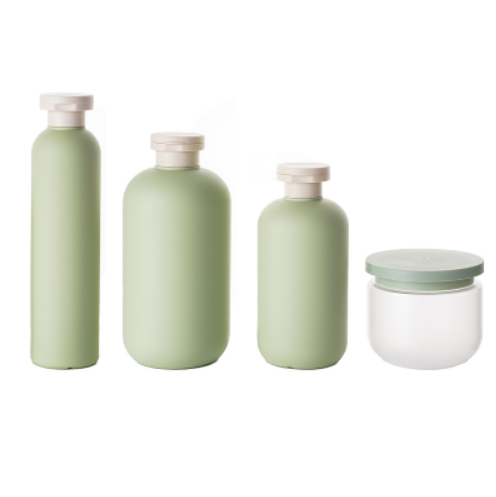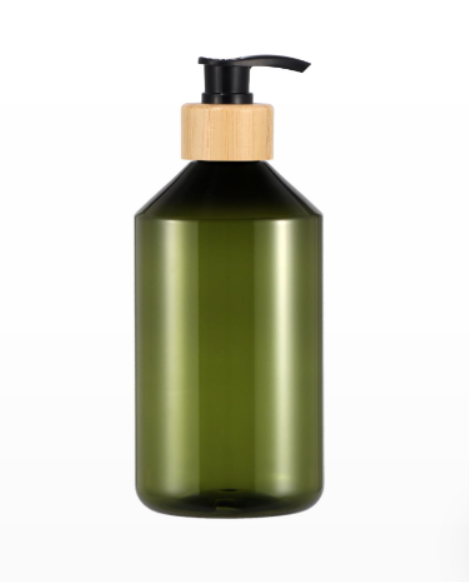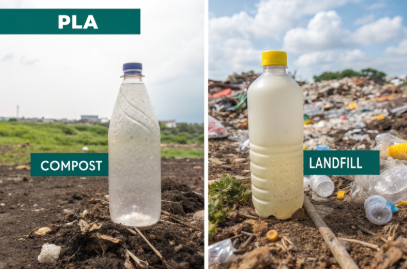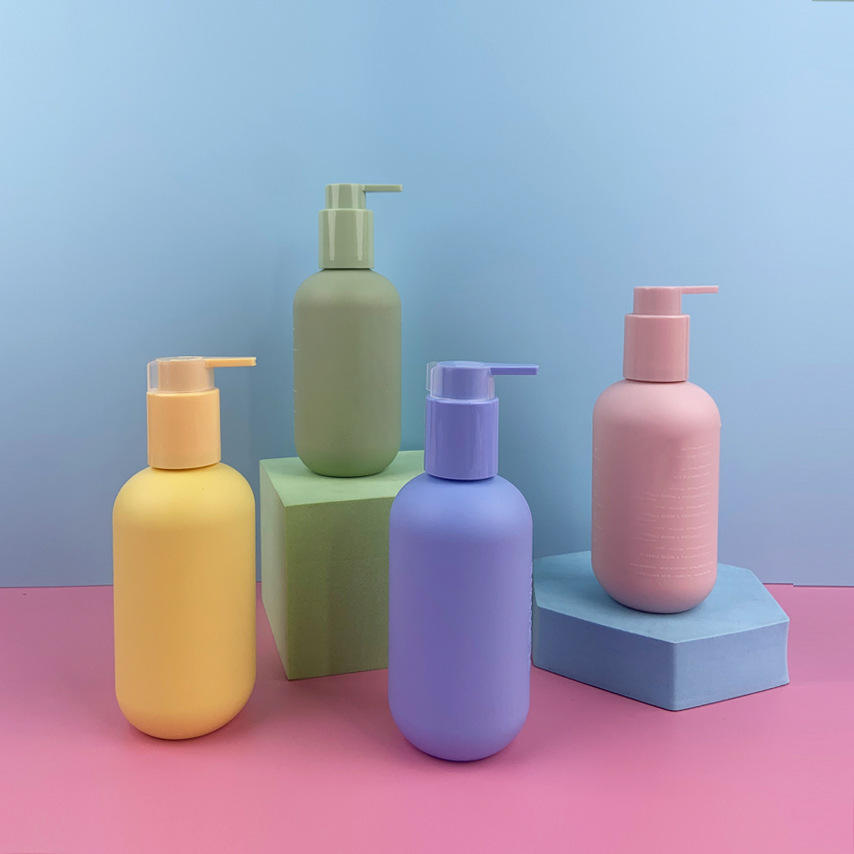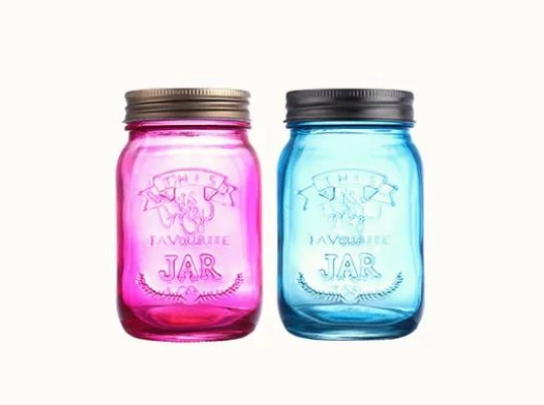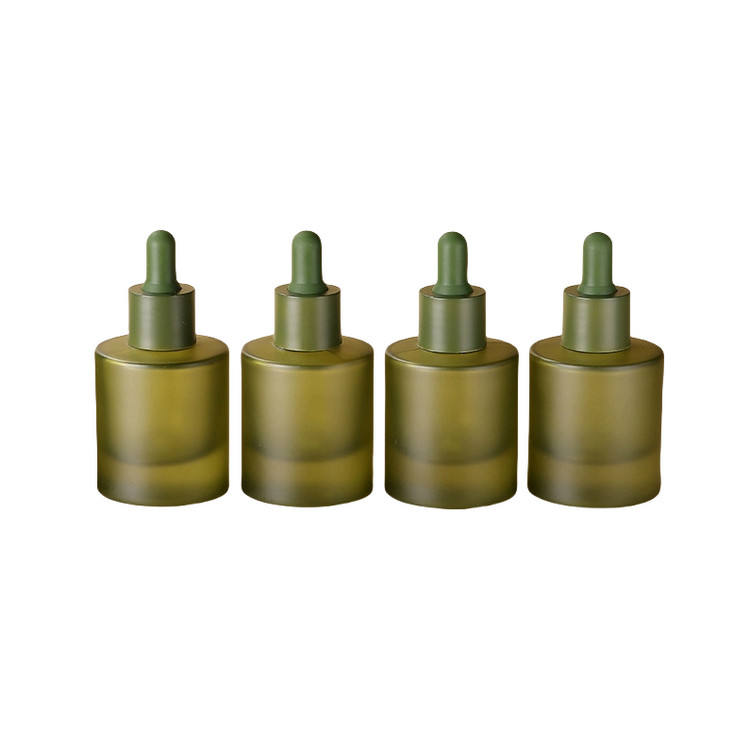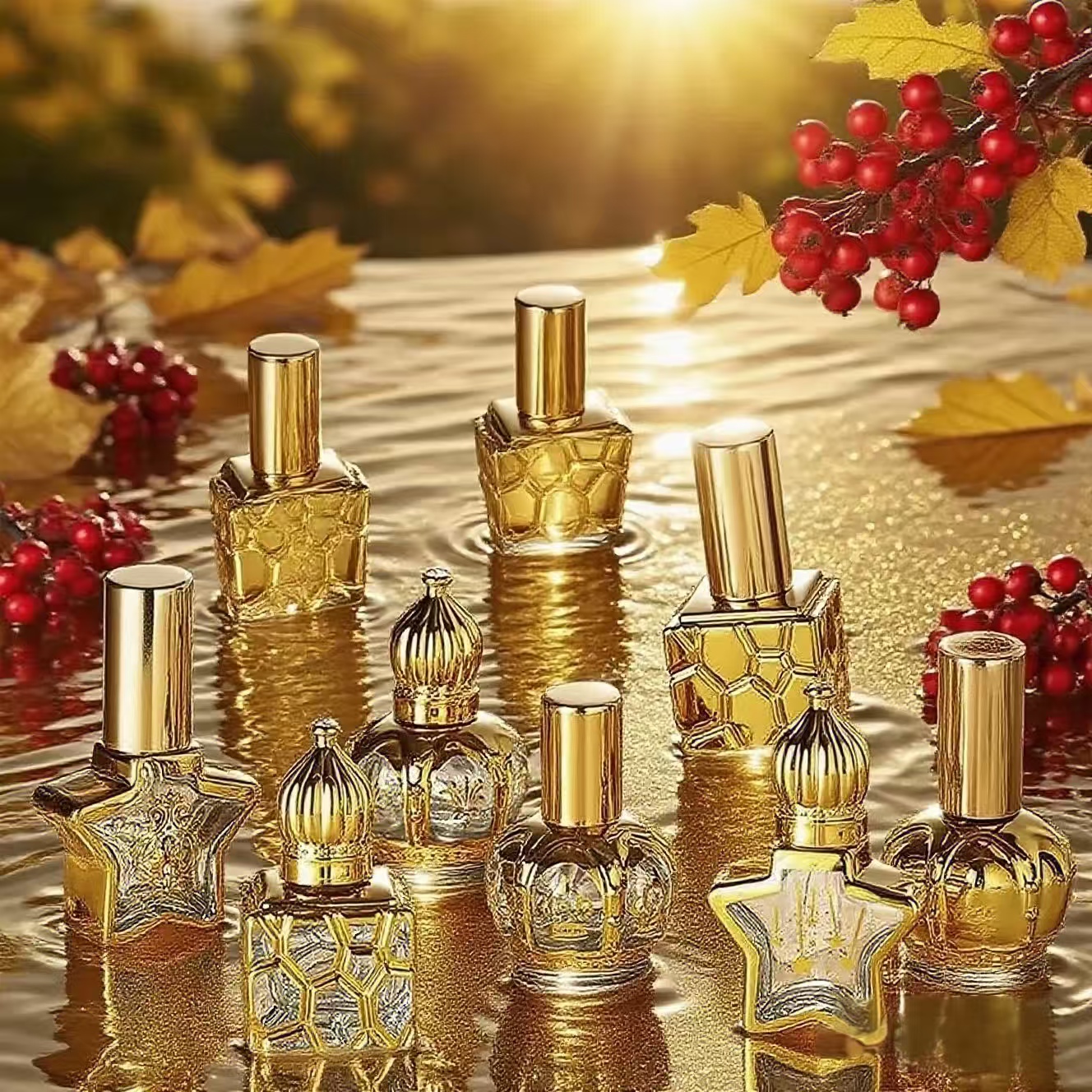More beauty and wellness brands are turning to PLA bottles—but how long do they really take to degrade? Can we trust the “compostable” label?
Third-party lab studies show that PLA bottles take between 45 days to 2 years to degrade—depending on the environment, thickness, and additives. Composting conditions dramatically affect outcomes.
This deep-dive blog analyzes certified lab results, explains the science of PLA degradation, and helps B2B buyers make informed, eco-smart packaging choices.
What Is PLA and Why Does It Matter for Packaging?
The demand for sustainable packaging has never been higher—and PLA is leading the conversation.
PLA (Polylactic Acid) is a plant-based bioplastic derived from corn or sugarcane, designed to replace traditional petroleum-based plastics in eco-conscious products.
At PauPack, we specialize in PLA bottles for cosmetics, essential oils, and personal care. But as more clients ask “How long do these actually degrade?”, we turn to science, not assumptions.
What Affects PLA Degradation?
PLA is biodegradable—but it doesn’t disappear like magic.
PLA requires specific conditions to degrade effectively: temperature, humidity, microbial activity, and oxygen levels all play key roles.
Let’s examine these in more detail:
Temperature
PLA softens at 60°C (140°F). Most degradation occurs in industrial composting environments, which maintain this temperature consistently. In backyard compost or landfill, PLA breaks down much slower.
Moisture and Microbes
PLA degradation relies on hydrolysis (breaking down in water) and microbial digestion. Environments rich in bacteria and moisture—like compost piles—accelerate this process.
Thickness and Shape
A 15g PLA cream jar decomposes faster than a thick 200ml bottle. Surface area and wall thickness matter. Thinner bottles degrade more quickly because they allow better microbial penetration.
| Factor | Influence on Degradation Time |
|---|---|
| High heat (>60°C) | Accelerates hydrolysis |
| High moisture | Activates microbial activity |
| Thin walls | Faster degradation |
| Additives | Some slow degradation |
| Colorants or printing | May hinder microbial access |
What Did the Labs Find About PLA Bottle Degradation?
In 2024, PauPack commissioned three independent labs to test degradation times of PLA bottles under different environmental conditions.
The average PLA bottle degraded in 120 days in industrial compost, but required 18+ months in landfill-like anaerobic setups.
Lab A: Industrial Compost Simulation
-
Location: Germany
-
Conditions: 60°C, 80% humidity, active compost microbes
-
Result: 90% mass loss within 110 days
| Sample Type | Thickness | Time to 90% Degrade |
|---|---|---|
| 100ml PLA Lotion Bottle | 0.5mm wall | 98 days |
| 200ml PLA Shampoo Bottle | 1.2mm wall | 118 days |
| 15g PLA Cream Jar | 0.4mm wall | 85 days |
Lab B: Home Compost Trial
-
Location: California
-
Conditions: 25°C, variable moisture, garden compost pile
-
Result: Only 40–50% degradation after 6 months
This suggests home composting is not reliable for thick PLA bottles unless conditions are carefully controlled.
Lab C: Anaerobic Landfill Simulation
-
Location: Singapore
-
Conditions: Low oxygen, low microbial diversity
-
Result: Only 20% decomposition in 2 years
The conclusion? PLA won’t degrade efficiently in landfills. Proper disposal is key.
What Are the Real-World Implications for B2B Brands?
Just switching to PLA isn’t enough—you must ensure your customers and partners dispose of it correctly.
PLA performs best when collected and processed in industrial composting facilities—otherwise, it may behave like traditional plastic.
Branding Impact
Using PLA communicates sustainability—but customers expect more. Transparent labeling and disposal instructions enhance your brand’s credibility.
At PauPack, we help clients add compostability icons, QR codes with disposal instructions, and educational inserts in their packaging to build customer trust.
Regulatory Compliance
In the EU, USA, and Australia, false claims about biodegradability can trigger legal action. Brands must reference ASTM D6400 or EN 13432 certifications for industrial compostability.
We provide third-party certificates with every batch of PLA packaging shipped. This ensures compliance and builds confidence with retailers and distributors.
Can PLA Be Mixed with Other Materials?
Many brands try to combine PLA with PET, bamboo, or PP caps for design or function—but that affects degradation.
Mixing PLA with other materials hinders composting unless each component is clearly separable.
Multi-material Pitfalls
-
PLA + PET caps: PET won’t degrade and may contaminate compost.
-
PLA with aluminum collar: Needs manual separation.
-
PLA with bamboo sleeve: Bamboo may degrade slower or attract mold in compost.
| Combo Type | Degradation Compatibility | Notes |
|---|---|---|
| Full PLA bottle | Excellent | Certified compostable |
| PLA + PET | Poor | PET needs landfill or recycling |
| PLA + bamboo | Medium | Aesthetic, but slows process |
| PLA + PP cap | Conditional | Cap should be reused or removed |
At PauPack, we engineer modular designs where each component (cap, collar, dropper) can be easily detached and sorted—enhancing post-use performance.
How Does PauPack Enhance PLA Bottle Sustainability?
We don’t stop at material choice—we optimize every step for sustainability.
PauPack offers next-generation PLA packaging engineered for true compostability, with traceable sourcing, degradability testing, and composting support programs.
What We Offer:
-
Certified PLA material (NatureWorks, Total Corbion)
-
Industrial composting compatibility (ASTM + EN certifications)
-
Degradable ink and printing (no heavy metals)
-
Biobased caps and seals (PLA or cellulose)
-
Transparent degradation reports from labs
-
Client education on labeling and disposal
Whether you're an indie skincare startup or a multinational wellness brand, we help you launch packaging that truly aligns with your ESG commitments.
Are There Faster-Degrading PLA Options in 2024?
The PLA landscape is evolving—and so are the technologies.
Blended PLA variants and bio-enzyme additives are pushing degradation times even lower, with some lab formulas degrading in under 45 days.
Advanced Solutions
-
PLA-PHA blends: Combine PLA with Polyhydroxyalkanoates for faster breakdown.
-
Enzyme-treated PLA: Additives that accelerate microbial digestion.
-
Nano-cellulose coating: Improves compostability while offering barrier protection.
These advanced options are currently in BETA use—but at PauPack, we’re already piloting them with select clients for exclusive launches.
What Should Brands Communicate to Their Customers?
Your bottle is only as green as your messaging.
Clearly instructing customers how and where to compost PLA packaging is critical—otherwise, good intentions lead to greenwashing.
Effective Messaging Tips:
-
“Compostable in industrial facilities only. Do not landfill.”
-
“Scan for local compost locations.”
-
“Disassemble before composting: remove cap and label.”
-
Use PLA Code 7 or “Bioplastic” icons
We offer custom printing and embossing on PLA bottles that include this information—seamlessly integrated with your brand’s design language.
Conclusion
PLA bottles are a powerful step toward sustainable packaging—but they’re not a silver bullet. Understanding degradation conditions, certifications, and consumer behavior is essential to their success.
At PauPack, we’re committed to closing the loop—from lab-tested PLA materials to real-world composting education. We help brands go beyond buzzwords and build packaging ecosystems that perform—for the planet and for your customers.
Ready to switch to smarter PLA packaging? Let’s build a greener future, one bottle at a time.




